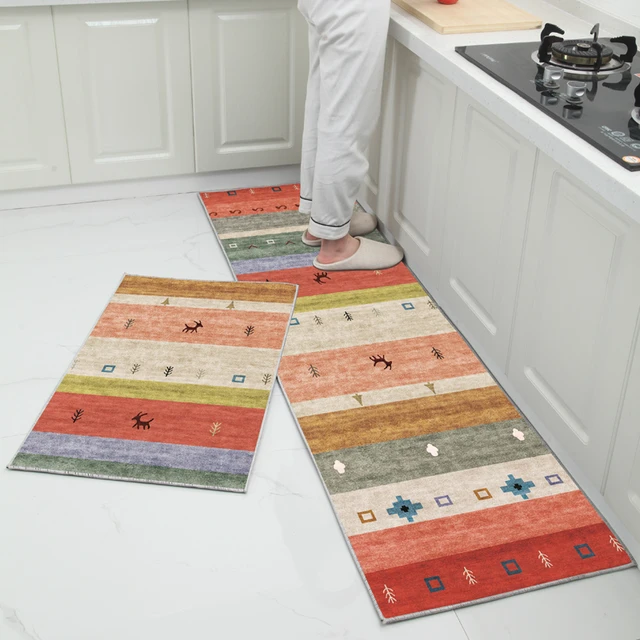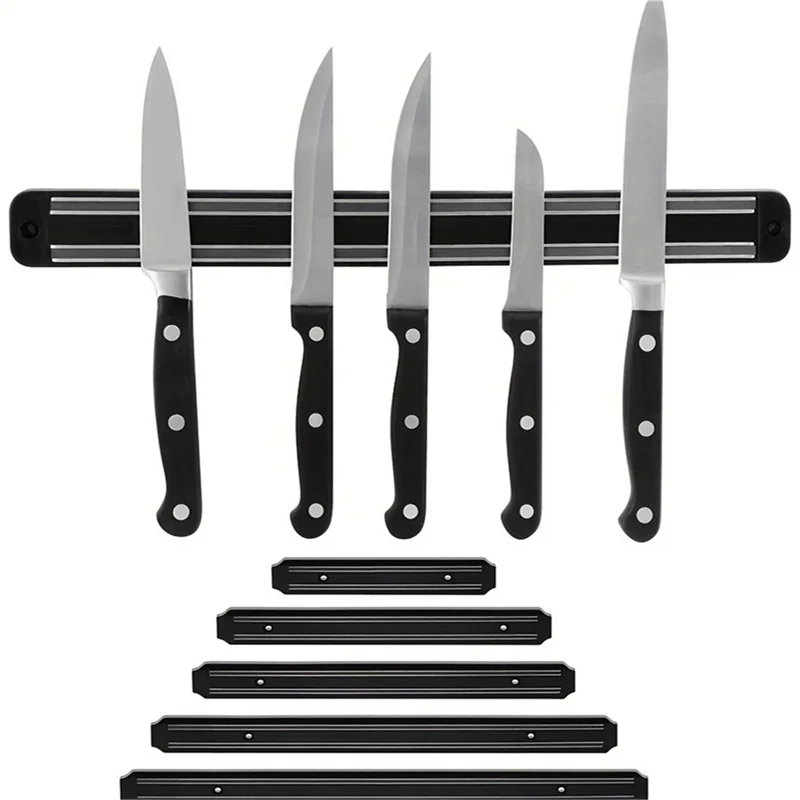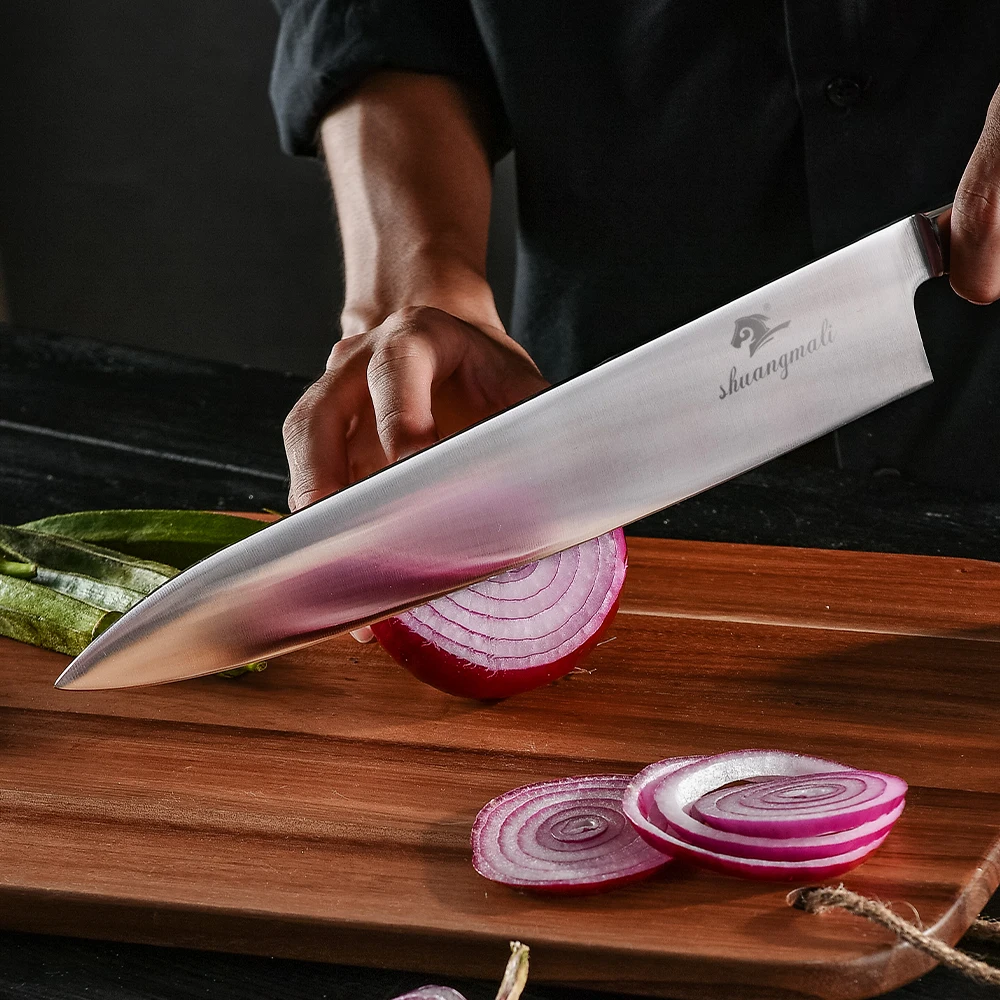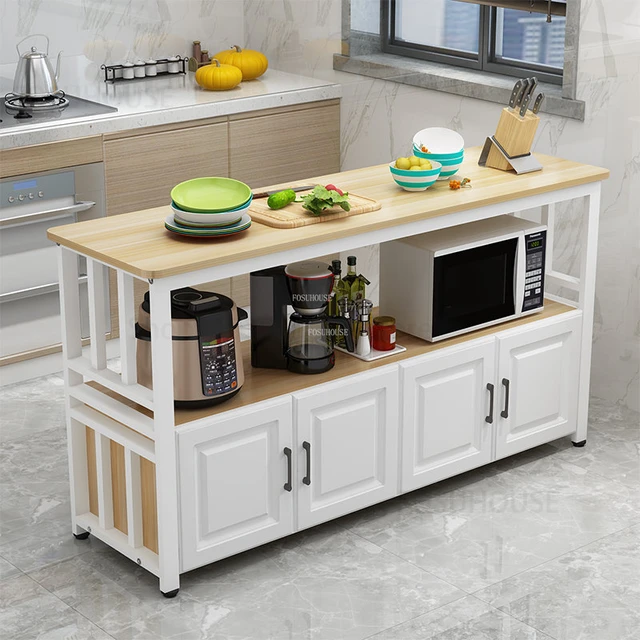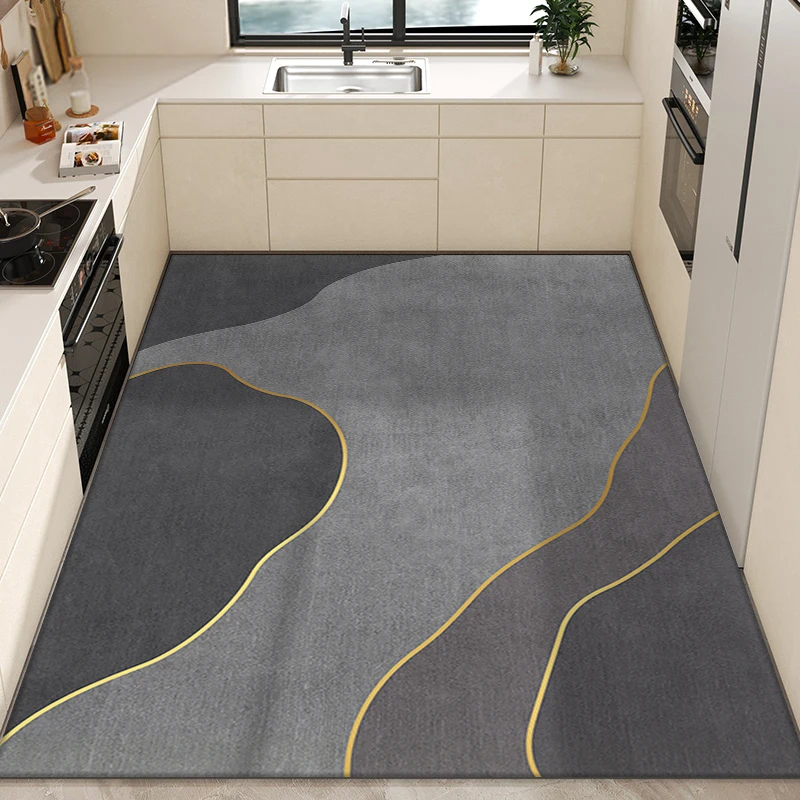 Introduction:
Introduction:
Rugs can be a stylish and functional addition to kitchen floors, providing comfort, insulation, and protection. When choosing rugs for kitchen floors, various factors such as durability, size, material, and design should be considered. In this comprehensive guide, we will explore the benefits, types, and considerations for selecting rugs for kitchen floors. By understanding these factors, you can make informed decisions to enhance the functionality and aesthetics of your kitchen space.
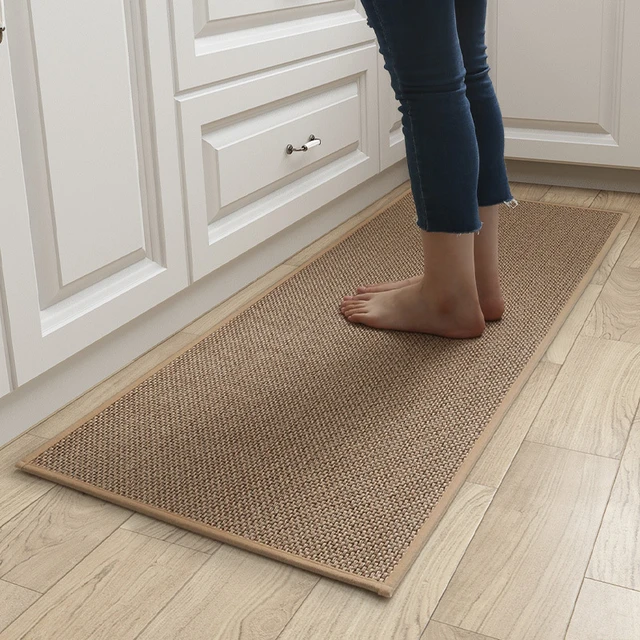 Some common materials used for kitchen rugs:
Some common materials used for kitchen rugs:
Rugs for kitchen floors are available in a variety of materials, each with its own characteristics and benefits. Some common materials used for kitchen rugs include:
Cotton:
Cotton rugs are soft, affordable, and easy to clean. They are lightweight and offer a comfortable feel underfoot. Cotton rugs are often machine washable, making them convenient for kitchen use.
Nylon:
Nylon rugs are durable and resistant to stains, making them suitable for high-traffic areas in the kitchen. They are easy to clean and maintain, as they can be spot cleaned or even machine washed.
Polyester:
Polyester rugs are known for their resistance to fading, stains, and moisture. They are durable and offer a soft and cushioned feel. Polyester rugs are often affordable and come in a wide range of colors and patterns.
Natural Fiber:
Natural fiber rugs, such as jute or sisal, add a natural and rustic touch to the kitchen. They are typically moisture-resistant and durable. Natural fiber rugs may require more maintenance and spot cleaning compared to synthetic materials.
Washable or Indoor/Outdoor Rugs:
Washable or indoor/outdoor rugs are designed to withstand spills, stains, and moisture. They are often made from materials like polypropylene, which makes them highly durable and easy to clean. These rugs are great for kitchens as they can be easily washed or hosed down if needed.
When selecting a material for a kitchen rug, consider factors such as ease of cleaning, durability, and the specific requirements of your kitchen environment. Additionally, make sure to choose a rug with a non-slip backing or use a rug pad to ensure stability and safety on kitchen floors.
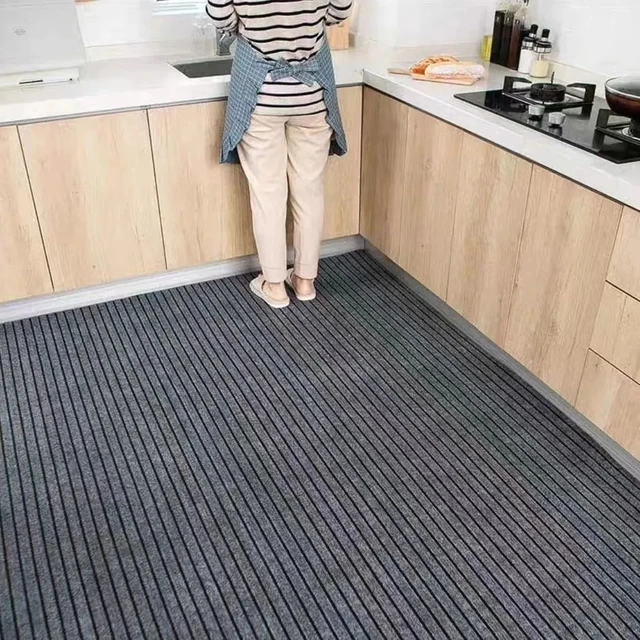 Benefits of Rugs for Kitchen Floors
Benefits of Rugs for Kitchen Floors
Comfort and Ergonomics:
Rugs offer cushioning and relieve pressure on the feet, providing a more comfortable kitchen experience during extended periods of standing or cooking.
Insulation and Sound Absorption:
Rugs help to insulate the kitchen floor, preventing heat loss and reducing noise levels in the room.
Protection for Floors:
Rugs act as a barrier, protecting the kitchen floor from scratches, spills, and stains that can occur from food, liquids, or dropped objects.
Types of Rugs for Kitchen Floors
Area Rugs:
Area rugs are versatile and come in various sizes, shapes, and designs to suit different kitchen layouts and styles.
They can cover larger areas of the kitchen floor, providing both functional and decorative benefits.
Runner Rugs:
Runner rugs are long and narrow, perfect for placing along high-traffic areas in the kitchen, such as by the sink or stove.
They add visual interest while offering a comfortable and protective surface.
Washable Rugs:
Washable rugs are designed for easy cleaning and maintenance, making them ideal for kitchens where spills and stains are more likely to occur.
They are typically made of materials that can withstand machine washing or spot cleaning.
Some common locations where rugs are often placed in kitchens:
Rugs for kitchen floors are generally placed in areas that require cushioning, protection, or added comfort. Here are some common locations where rugs are often placed in kitchens:
In front of the sink:
Placing a rug in front of the sink provides cushioning and helps prevent fatigue while standing for long periods. It also offers protection to the flooring from water splashes and potential stains.
In front of the stove or cooking area:
A rug in front of the stove or cooking area can help catch spills and splatters, protecting the flooring from potential stains and making cleaning easier.
Near high-traffic areas:
Rugs can be placed in areas with high foot traffic, such as entrances to the kitchen or near frequently used doorways. These rugs help trap dirt and debris, preventing them from spreading to the rest of the kitchen.
Under the dining table:
Placing a rug under the dining table in the kitchen area can add warmth, comfort, and visual appeal. It also helps protect the flooring from spills and scratches caused by moving chairs.
In work zones or prep areas:
Rugs can be placed in specific work zones or prep areas, providing comfort and cushioning for tasks such as chopping vegetables or standing at a kitchen island.
When choosing rugs for kitchen floors, consider selecting durable materials that are easy to clean, resistant to stains, and can withstand the demands of a kitchen environment. Additionally, ensure that the rugs have proper non-slip backing or use rug pads to prevent slipping or shifting on slick kitchen floors.
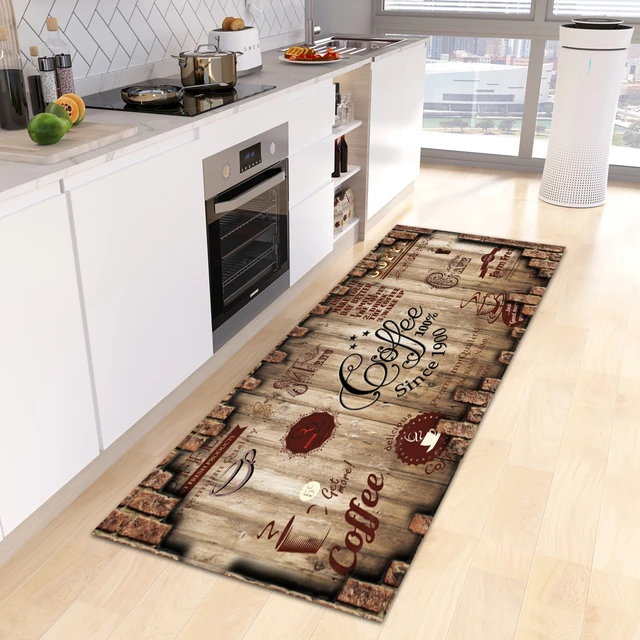 Considerations for Choosing Rugs for Kitchen Floors
Considerations for Choosing Rugs for Kitchen Floors
Durability and Stain Resistance:
Choose rugs made of durable and stain-resistant materials that can withstand heavy foot traffic, frequent spills, and food splatters.
Look for materials such as nylon, polyester, or polypropylene that are known for their durability and stain resistance.
Size and Placement:
Consider the size of your kitchen and the intended placement of the rug.
Measure the available space to ensure the rug fits properly and doesn’t obstruct any kitchen appliances or furniture.
Anti-Slip Backing or Padding:
To enhance safety, opt for rugs with anti-slip backing or use rug pads to prevent them from sliding or shifting on the floor.
This is particularly important in kitchen areas with potential water or liquid spills.
Style and Design:
Select rugs that complement the existing kitchen decor or add a pop of color or pattern to enhance the overall aesthetic appeal.
Consider factors such as design, color, and texture to achieve the desired look and feel.
Maintenance and Care
Regular Cleaning:
Follow the manufacturer’s care instructions for cleaning and maintenance.
Vacuuming, spot cleaning, and regular washing, depending on the rug’s material, are essential to keep the rugs in good condition.
Spill and Stain Protection:
Use protective treatments or sprays to safeguard rugs against stains and spills.
Promptly clean up any spills or stains to prevent them from setting into the rug fibers.
Rotation and Replacement:
Rotate rugs regularly to distribute wear and tear more evenly.
Assess the condition of the rug periodically and consider replacement if it becomes excessively worn or damaged.
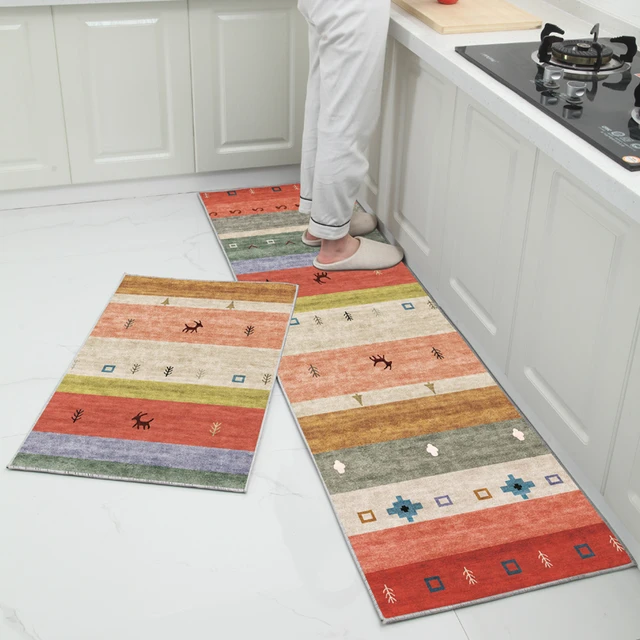 Conclusion:
Conclusion:
Rugs for kitchen floors provide numerous benefits, including comfort, insulation, and floor protection. By choosing the right type of rug for your kitchen and considering factors such as durability, size, material, and design, you can enhance both the functionality and aesthetics of your kitchen space. Regular maintenance and care are essential to keep the rugs in good condition, ensuring they continue to provide comfort and protection over time. With a wide range of options available, you can find rugs that suit your style and requirements, transforming your kitchen into a comfortable and stylish space.
